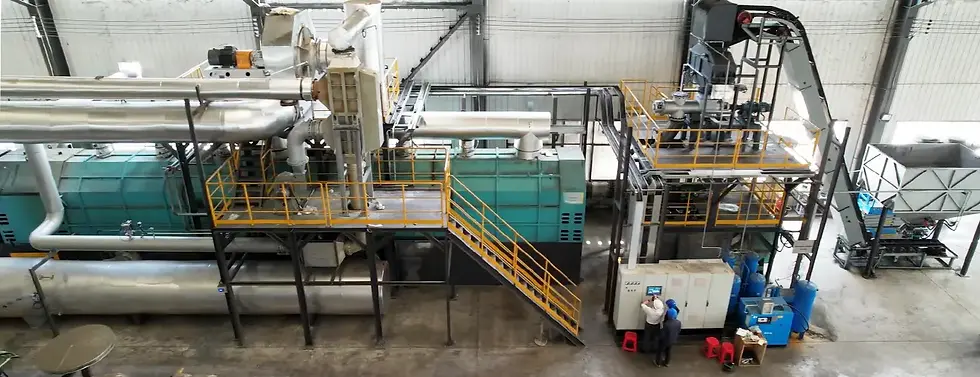Emission Control Strategies for Tyre to Oil Plant: Meeting Global Standards
- lee784287
- 7月24日
- 讀畢需時 2 分鐘
As the tyre to oil plant gains traction as a waste-to-energy solution, emission control has become a central focus for ensuring regulatory compliance and environmental stewardship. Pyrolyzing end-of-life tires generates valuable byproducts—such as fuel oil, carbon black, and syngas—but it also presents challenges in managing pollutants. Effective emission control strategies are essential to meet global standards and maintain sustainable operations.
Multi-Stage Gas Treatment System
At the core of emission management is a multi-stage gas purification system. The tyre to oil plant generates pyrolysis gas containing hydrocarbons, sulfur compounds, and fine particulates. To mitigate environmental risk, advanced configurations include a series of treatment stages:
Cyclone Separator – Removes coarse particulates from the flue gas stream through centrifugal action.
Scrubbing Unit – Injects alkaline solution to neutralize acidic gases such as hydrogen chloride and sulfur dioxide.
Ceramic Ring Adsorption Tower – Captures finer particles and semi-volatile organic compounds through physical filtration.
Activated Carbon Filter – Adsorbs residual toxins, particularly polycyclic aromatic hydrocarbons and dioxins.
These systems operate in tandem to deliver consistent results, enabling the tyre to oil plant to comply with emission thresholds established by agencies such as the U.S. EPA, EU Industrial Emissions Directive, and China's GB standards.

Thermal Oxidation and Secondary Combustion
To manage non-condensable gases rich in hydrocarbons, the tyre to oil plant may integrate a thermal oxidation chamber. This unit combusts excess syngas at high temperatures, typically exceeding 850°C, ensuring complete breakdown of volatile organic compounds (VOCs) and reducing the emission of unburned hydrocarbons.
Secondary combustion chambers equipped with automatic temperature control further optimize burn efficiency. By maintaining combustion in the ideal thermal window, the system minimizes the formation of nitrogen oxides (NOₓ) while ensuring complete destruction of pollutants.
Pressure and Leak Management
Emission control also hinges on maintaining system integrity. The tyre to oil plant must operate under slight negative pressure to prevent fugitive gas escape. This is achieved through induced draft fans and pressure balancing valves that stabilize the internal environment.
Routine inspection protocols, combined with real-time pressure monitoring, help detect and address micro-leaks around the reactor, pipe joints, and gas recovery units. Preventing unintentional releases not only protects air quality but also ensures worker safety and system efficiency.
Compliance Through Automation and Monitoring
Modern tyre to oil plants integrate emission monitoring sensors linked to centralized control platforms. These systems track parameters such as particulate concentration, sulfur levels, CO, and total VOCs. If any variable exceeds preset limits, the control logic triggers alarms or initiates emergency shutdown procedures.
Automated logging of emissions data enables compliance reporting and third-party audits. Continuous Emission Monitoring Systems (CEMS) are often mandatory in jurisdictions with rigorous environmental laws and support transparency in sustainability practices.
Conclusion
Emission control in a tyre to oil plant is not a single intervention but a coordinated system of filtration, combustion, pressure regulation, and monitoring. Meeting global standards requires a robust technical foundation, responsive control architecture, and a commitment to proactive environmental management. As pyrolysis technology advances, stringent emission strategies remain integral to scaling operations responsibly while contributing to circular economy goals.


留言